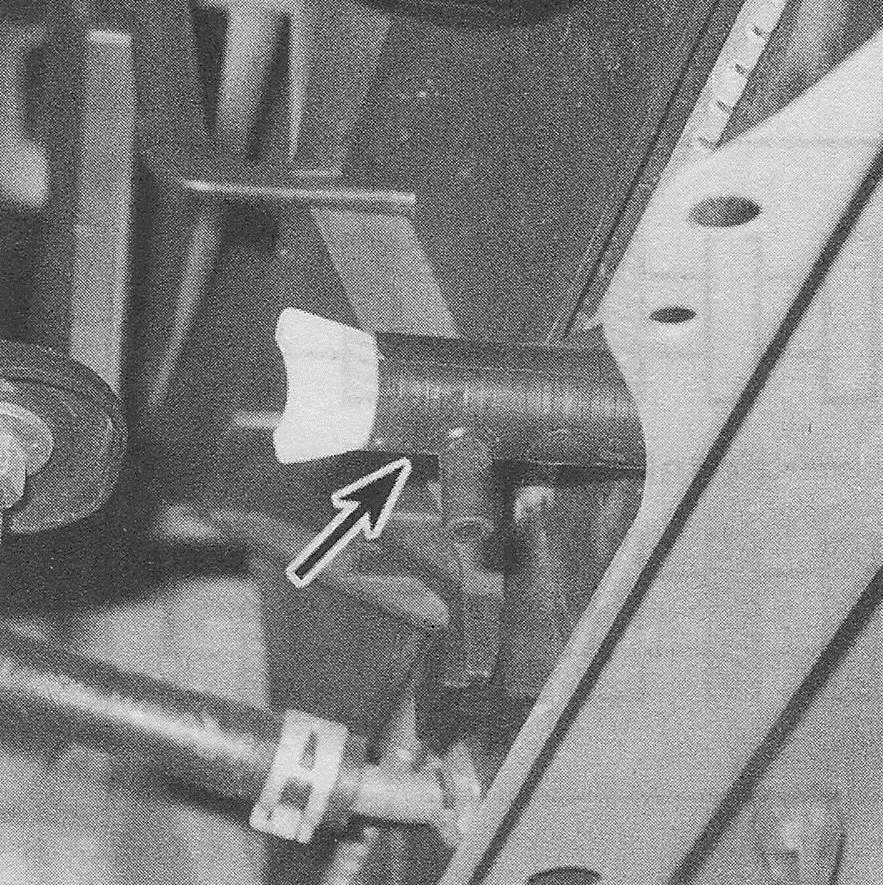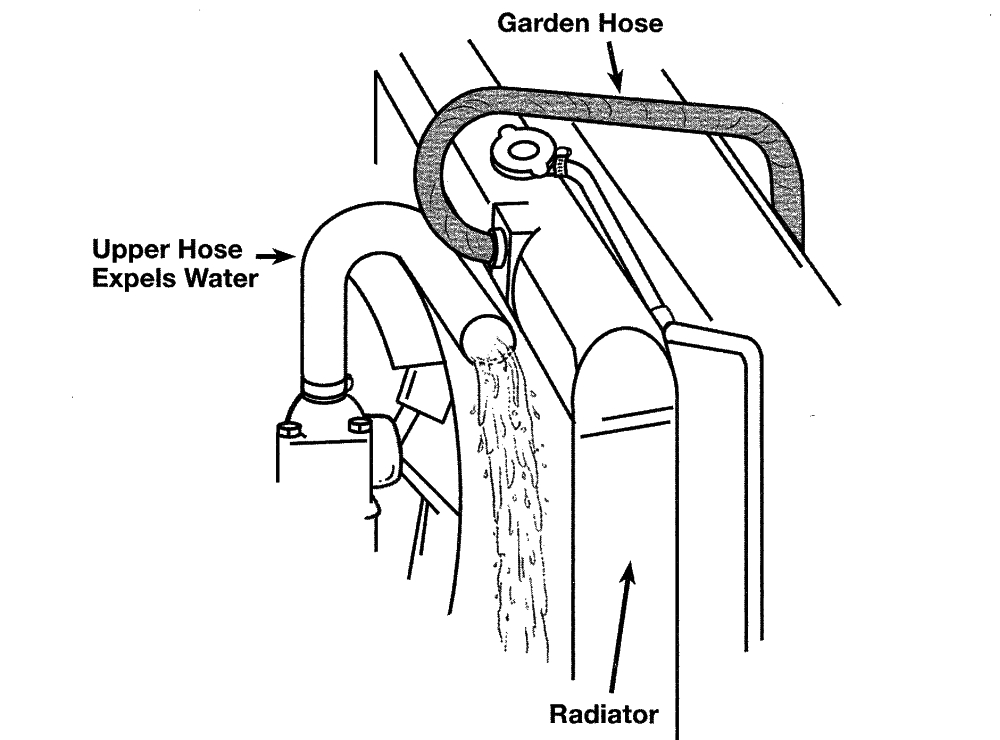Cooling system servicing (draining, flushing and refilling)
Warning: Wait until the engine is completely cool before beginning this procedure.
Warning: Do not allow engine coolant (antifreeze) to come in contact with your skin or painted surfaces of the vehicle. Rinse off spills immediately with plenty of water. Antifreeze highly toxic if ingested. Never leave antifreeze laying around in an open container or in puddles on the floor; children and pets are attracted by its sweet smell and may drink it. Check with local authorities about disposing of used antifreeze. Many communities have collection centers which will see that antifreeze is disposed of safely.
1. Periodically, the cooling system should be drained, flushed and refilled to replenish the antifreeze mixture and prevent formation of rust and corrosion, which can impair the performance of the cooling system and cause engine damage. When the cooling system is serviced, all hoses and the radiator cap should be checked and replaced if necessary.
Draining
2. Apply the parking brake and block the wheels. If the vehicle has just been driven, wait several hours to allow the engine to cool down before beginning this procedure.
3. Once the engine is completely cool, remove the radiator cap.
4. Move as large container under the radiator drain to catch the coolant. Attach a length of hose to the drain fitting to direct the coolant into the container (some models are already equipped with a hose), then open the drain fitting (a pair of pliers may be required to turn it) (see illustration).
29.4 On most models you will have to remove a splash panel for access to the drain fitting located at the bottom of the radiator

5. After the coolant stops flowing out of the radiator, move the container under the engine block drain plug (s). Loosen the plug(s) and allow the coolant in the block to drain. On 2011 and earlier four-cylinder models, the block drain plug is on the front side of the engine block. Block drain plugs are not used on 2012 and later 4-cylinder models. On V6 models, a block drain plug is on each side of the block.
6. While the coolant is draining, check the condition of the radiator hoses, heater hoses and clamps (see Cooling system check if necessary).
7. Replace any damaged clamps or hoses (see Cooling, heating and air conditioning systems).
Flushing
8. Once the system is completely drained, remove the thermostat from the engine (see Cooling, heating and air conditioning systems). Then reinstall the thermostat housing without the thermostat. This will allow the system to be flushed.
9. Reinstall the engine block drain plugs and tighten the radiator drain plug. Turn your heating system controls to Hot, so that the heater core will be flushed at the same time as the rest of the cooling system.
10. Disconnect the upper radiator hose from the radiator. Place a garden hose in the upper radiator inlet, turn the water on and flush the system until the water runs clear out of the upper radiator hose (see illustration).
29.10 With the thermostat removed, disconnect the upper radiator hose and flush the radiator and engine block with a garden hose

11. In severe cases of contamination or clogging of the radiator, remove the radiator (see Cooling, heating and air conditioning systems) and have a radiator repair facility clean and repair it if necessary. Many deposits can be removed by the chemical action of a cleaner available at auto parts stores. Follow the procedure outlined in the manufacturer’s instructions.
Note: When the coolant is regularly drained and the system refilled with the correct antifreeze/water mixture, there should be no need to use chemical cleaners or descales.
12. After flushing, drain the radiator and remove the block drain plug (s) once again to drain the water from the system.
Refilling
13. Close and tighten the radiator drain. Install and tighten the block drain plug (s).
14. Place the heater temperature control in the maximum heat position.
15. Slowly add new coolant to the radiator until it’s full. Add coolant to the reservoir up to the Full mark.
16. Install the radiator cap off and run the engine in a well-ventilated area until the thermostat opens (coolant will begin flowing through the radiator and the upper radiator hose will become hot).
17. Turn the engine off and let it cool completely. Add more coolant mixture to bring the level back up to the lip on the radiator filler neck.
18. Squeeze the upper radiator hose to expel air, then add more coolant mixture if necessary. Reinstall the radiator cap.
19. If necessary, add more coolant to the reservoir until it’s up to the Full mark.
20. Start the engine, allow it to reach normal operating temperature and check for leaks.